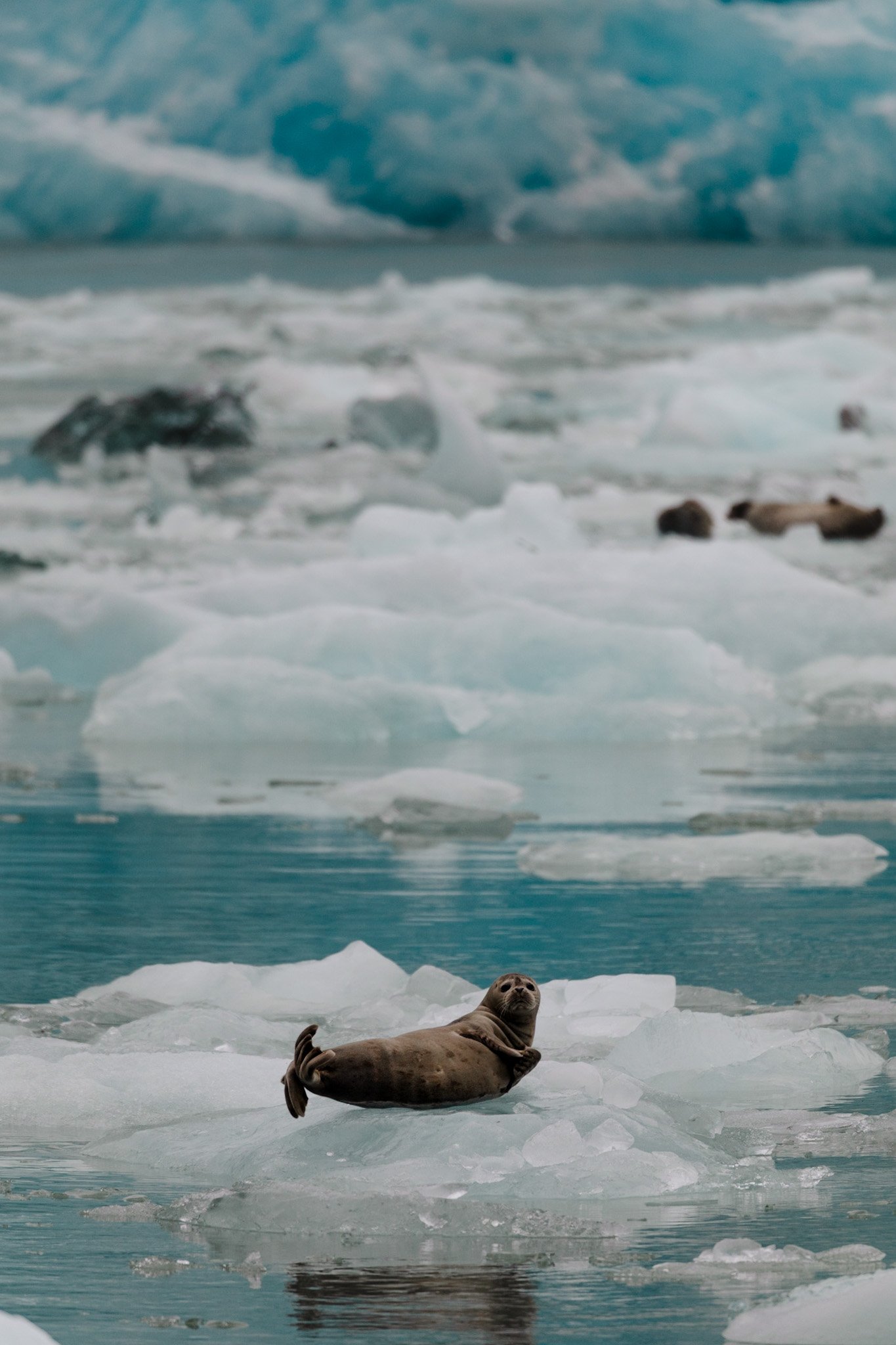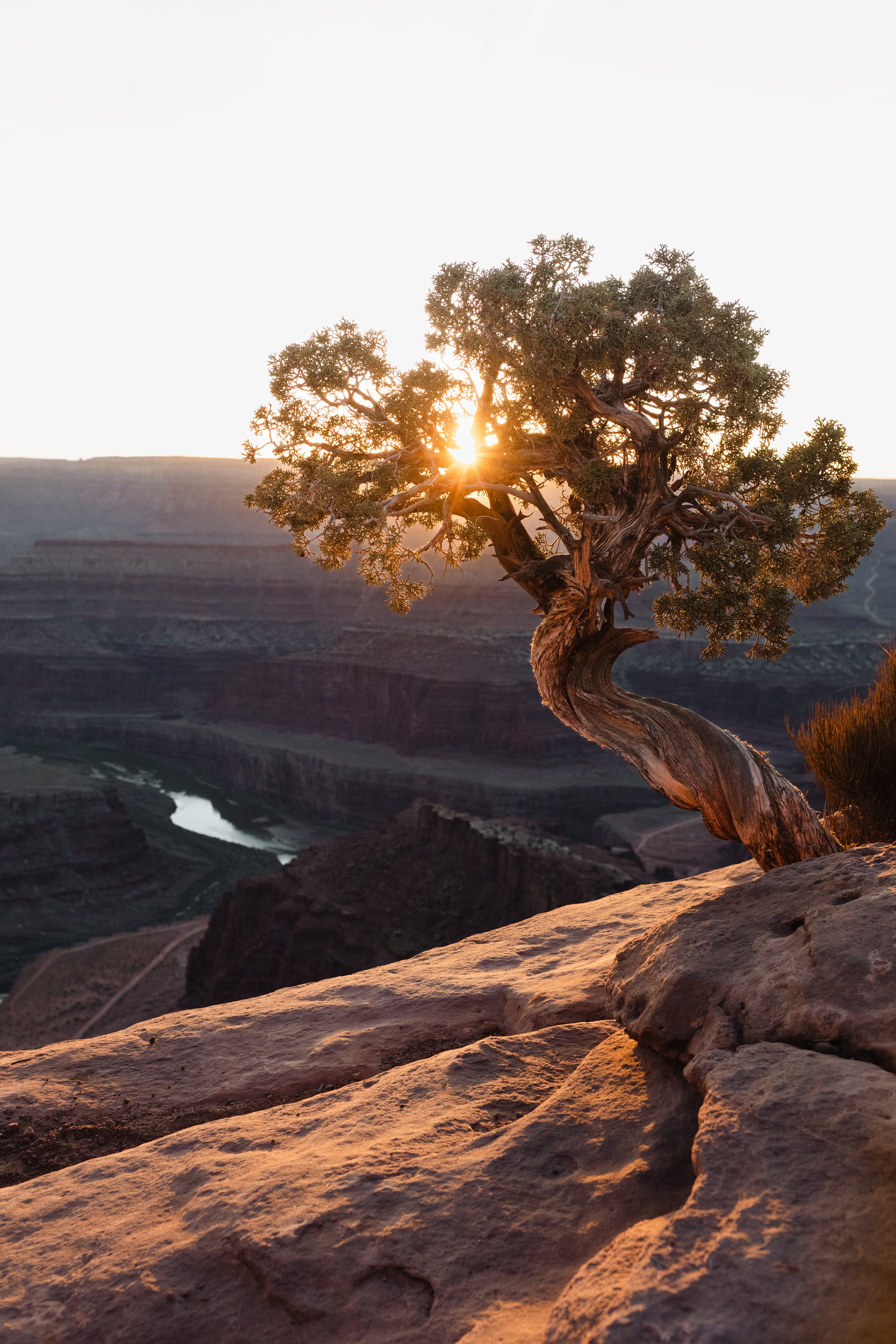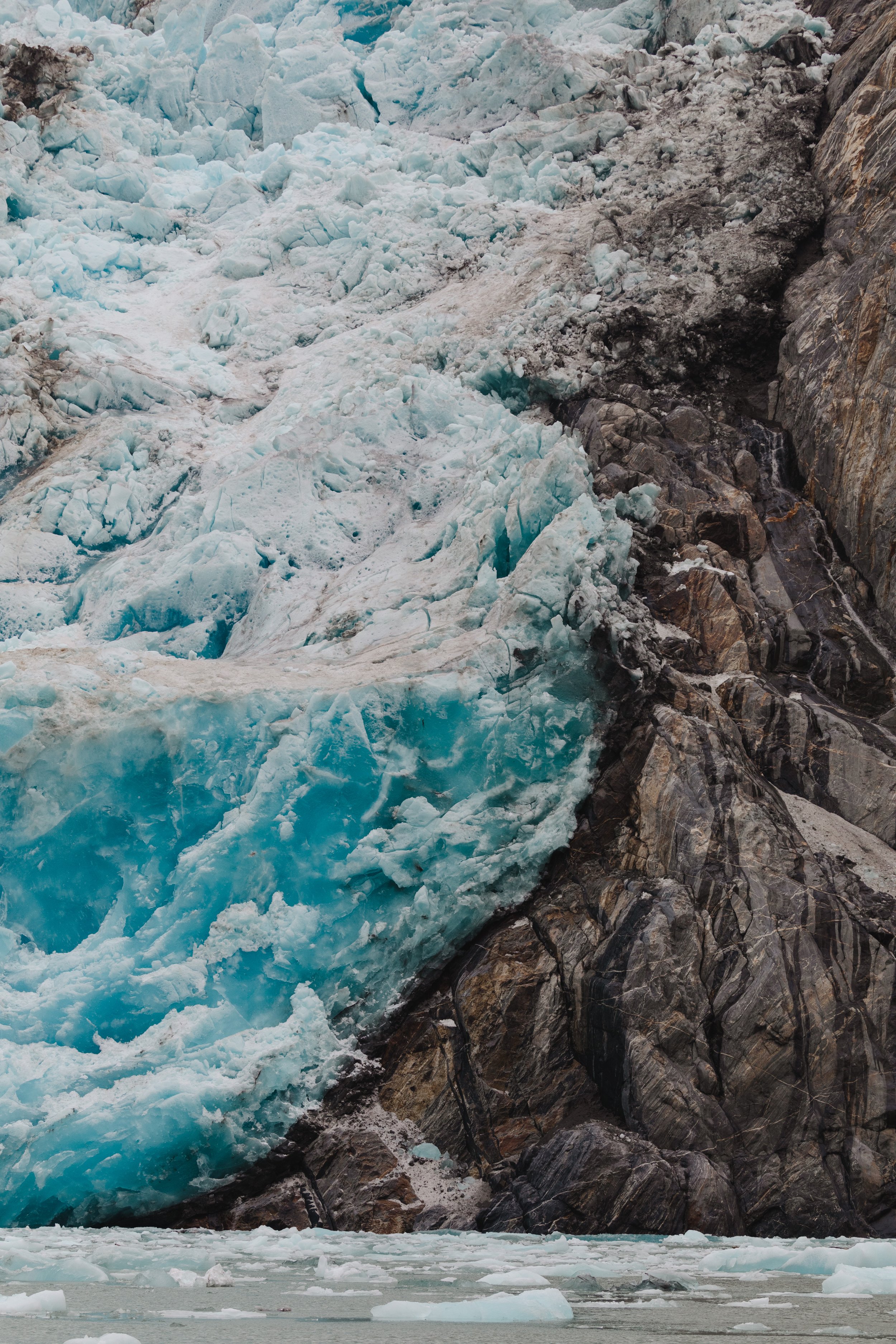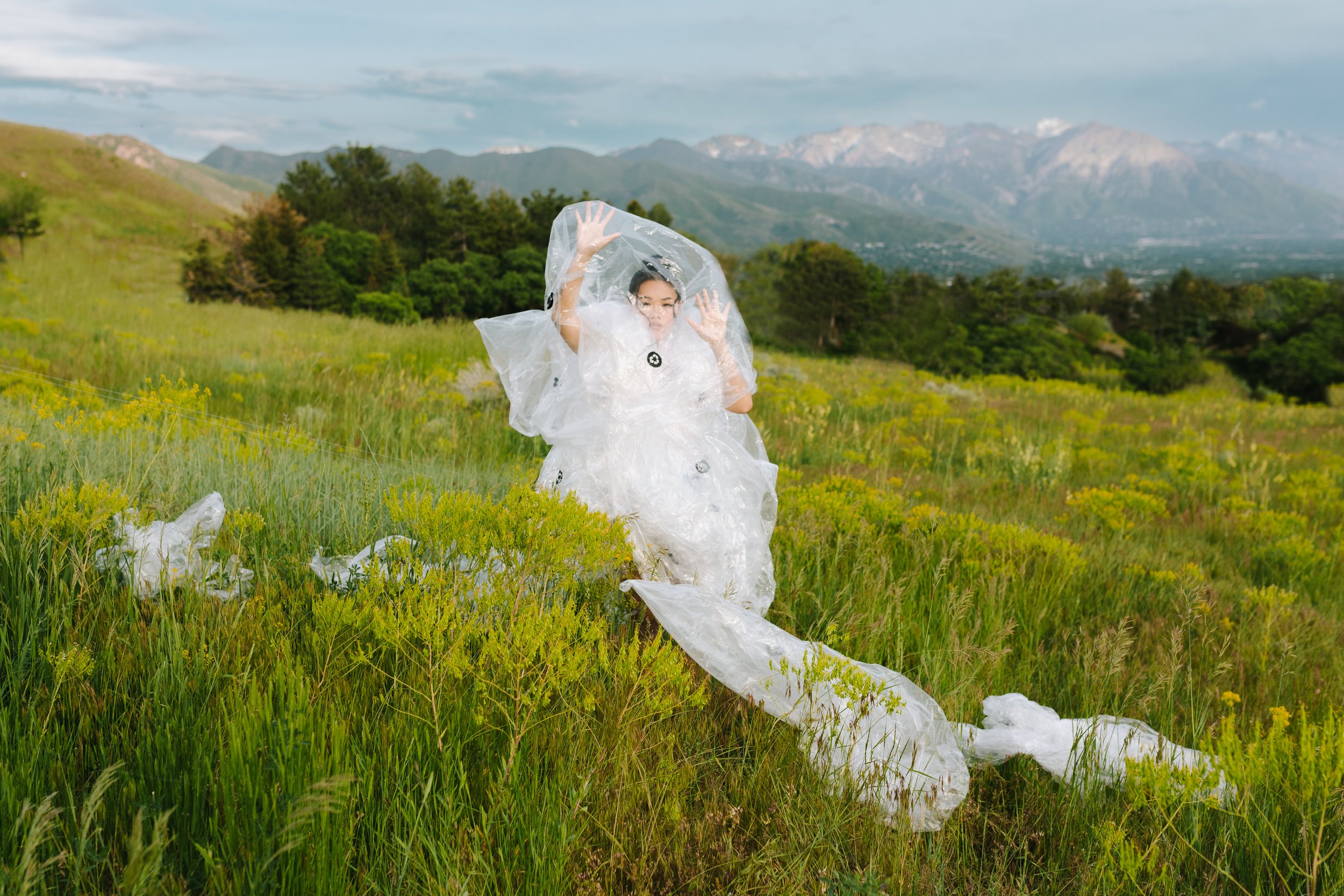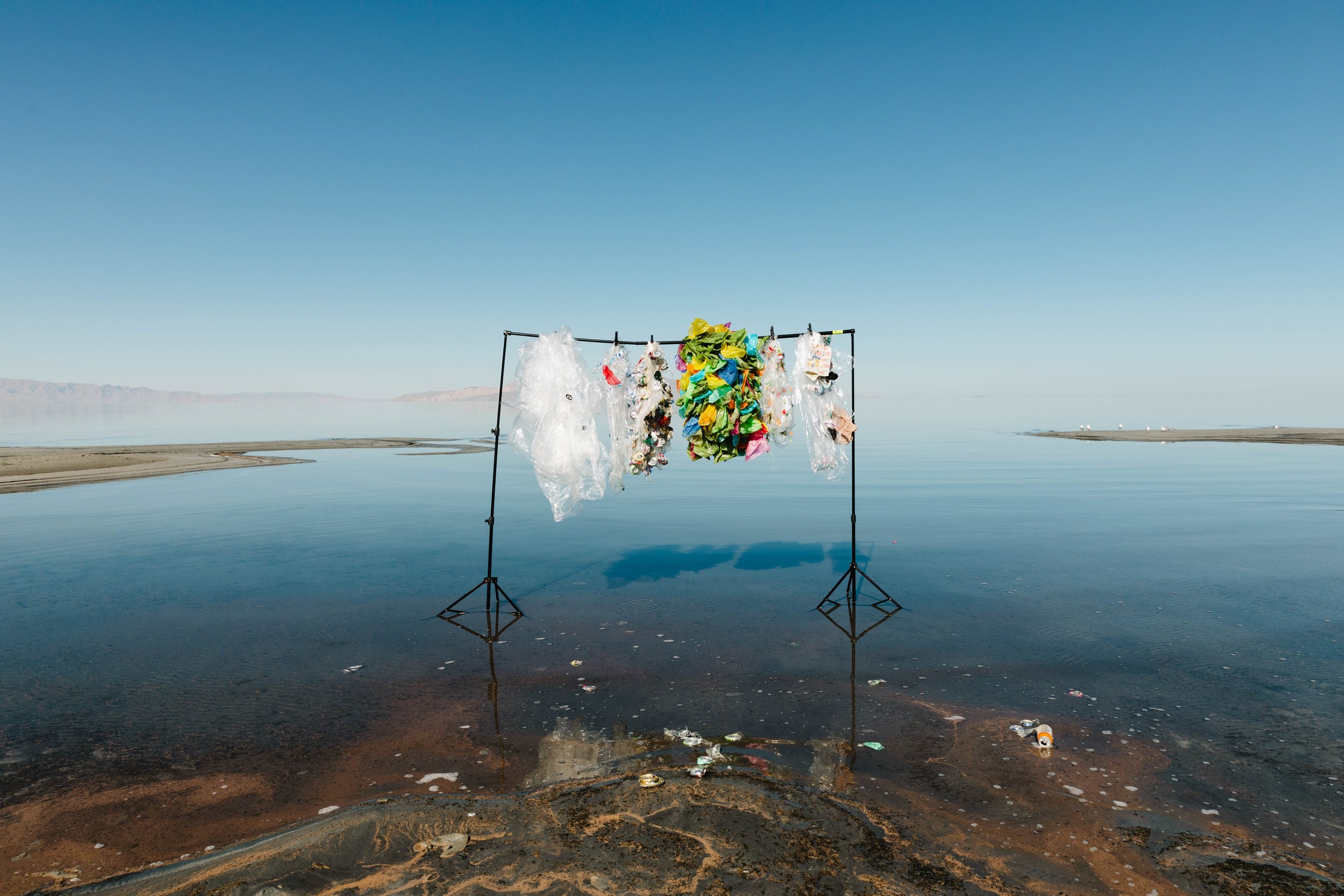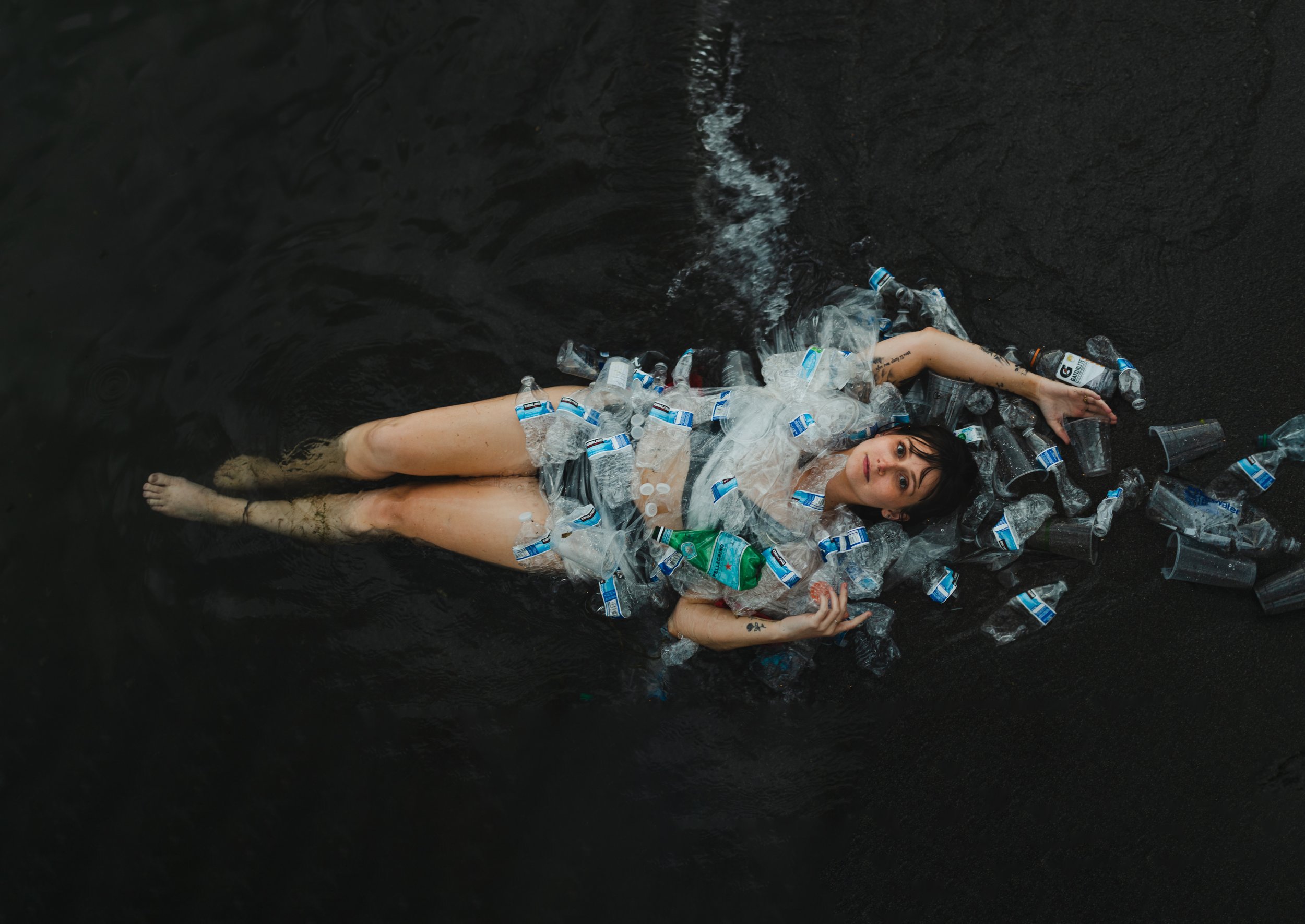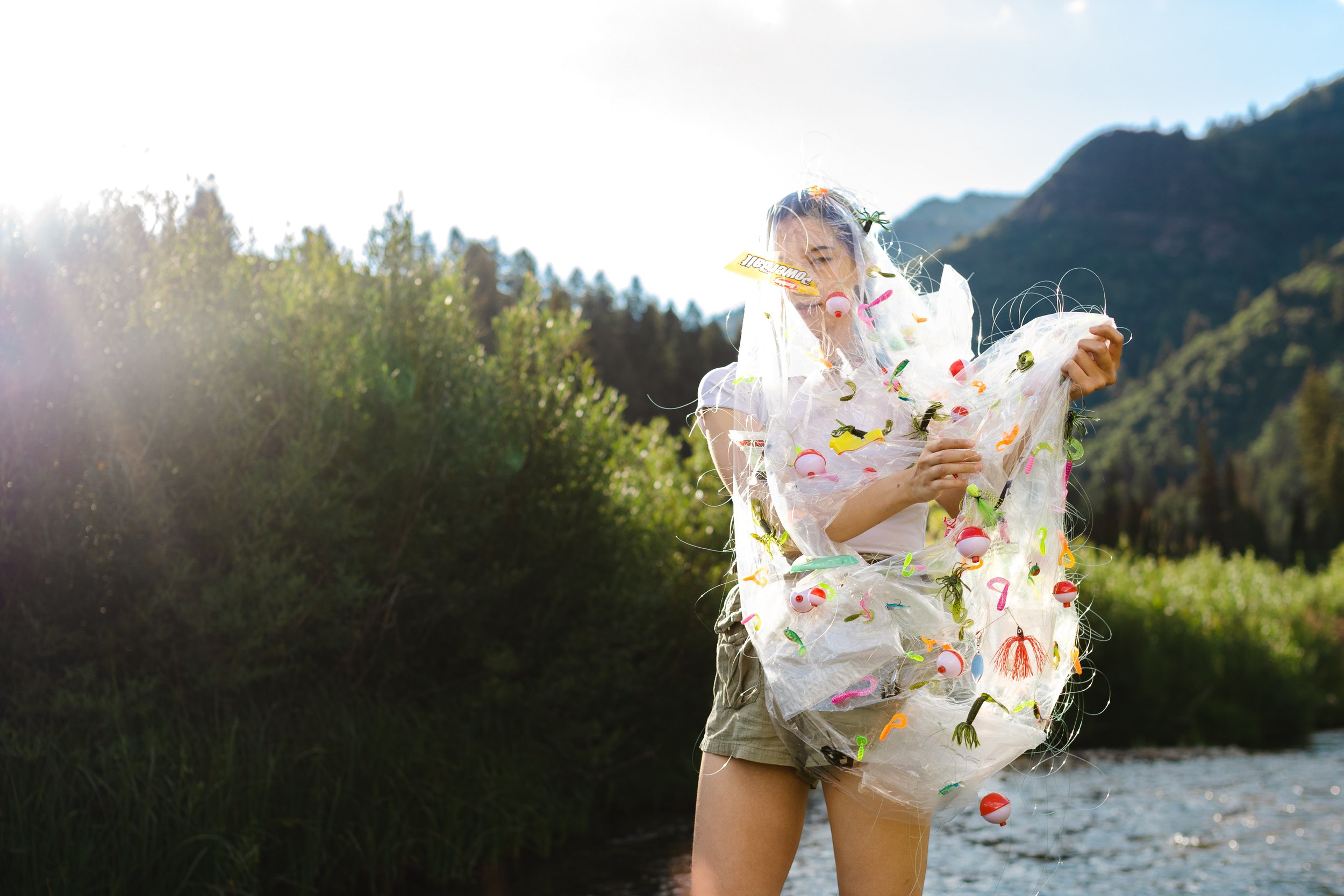From Volunteer of the Year to Communications Specialist
Sierra Hastings poses with one of her favorite things to build, and what got her into Sageland Collaborative: beaver dam analogues! Notice the beaver finger puppet making an appearance.
Last year, Sierra Hastings (literally) plunged into Sageland Collaborative’s work, earning herself the award of our Volunteer of the Year in 2021. We're thrilled to have her joining our team as Communications Specialist! Among a range of conservation and communications skills and experiences, she offers her photography, storytelling, and conservation skills to support wildlife and lands in the West. Get to know her with our interview below!
What brought you to Sageland Collaborative?
I dove deeply into stewardship and conservation volunteerism when I moved to Utah, taking days off to travel to National Parks where trail restoration days were happening, hike around the foothills in Salt Lake doing trail clean-ups, and eventually lead guided naturalist hikes.
Last summer, while searching for more volunteer opportunities closer to home, I stumbled upon a stream restoration day hosted at Swaner Preserve with Sageland Collaborative. I had followed Sageland for a while, prior to the name change, but had never gotten involved before. I had no idea what I was getting into, but I was excited about the prospect of getting to hang out in a creek for a few hours! Little did I know I was going to fall in love with building beaver dam analogs, and the amazing community that Sageland attracts.
After my first stream restoration day - and my first time ever wearing a full set of waders! - I was hooked. I went home and signed up for every stream restoration day that I could, and it was the highlight of my 2021 summer and fall. The stream restoration project is so hands-on, where you get to weave willows, stack rocks, and wade through the creek. It provides instant gratification as you see upstream water levels rise - there really is nothing quite like it. I also met so many incredible people who were equally stoked to be working in the field, and I learned so much from them about this new-to-me realm of conservation.
I’ve gone on to volunteer with other Sageland Collaborative projects, and each one has introduced new knowledge and passion to me. The volunteer opportunities are based on community science work and data collection, but to me they have always felt like a welcome step back into childhood: wonder, playing in creeks, seeking out toads and butterflies, and finding awe in everyday magic.
Sierra poses with a toad on our Boreal Toad Project.
A squirrel in Grand Teton National Park. ©Sierra Hastings
Can you tell us a bit about your background?
I don’t come from a science background, but I’ve always been fascinated by the intricacies of the natural world. As a child, you could find me in my grandparent’s backyard in Idaho sharing strawberries from the garden with grasshoppers, and in the pond behind the horse arena catching toads with my brother. When my family moved to Arizona, I was thrilled to discover the lizards that would soak up the early morning sun on the side of the house, and would admire the giant Saguaros that stretched across the desert landscape. As I grew, my fondness for these critters and these landscapes grew with me.
I lived in several states throughout the West growing up, and each move brought new appreciation for the incredible diversity of ecosystems within just this small corner of the world. I’ve had the opportunity to experience such a wide expanse of beauty, from the high alpine of Colorado’s Rocky Mountains to the otherworldly life of California’s Mojave Desert. When we made the move to Utah, though, I truly began to fall in love with what it meant to protect and preserve these beautiful spaces and the people and wildlife that call them home.
Moving to Utah also introduced me to my passion for photography. When we moved to Salt Lake, I was blown away by how close we were to the outdoors. I could be hiking in the foothills in less than 20 minutes, and I could be in a National Park in less than four hours! The ease of access was a breath of fresh air, and I took every opportunity I could to get out and explore this beautiful state. I took photos of all of my adventures on my phone, and would share them with my family when I got home. My parents saw how much I loved capturing these beautiful landscapes, and that year they gifted me my first proper camera.
From Grand Teton National Park to Alaska to Dead Horse Point State Park, Sierra has photographed beautiful locations across the continent. ©Sierra Hastings
Since then, I have taken hundreds of thousands of photos, and have only fallen more in love with this incredible Earth. Photography has been a way for me to find the magic in the natural world that I saw as a child. It allows me to see landscapes and the minute details within the landscape in a different light, and it amazes me that a photo has the power to transport people to a place they’ve never even heard of. I hope that as I continue along my photography journey, I can share this wonder with others, and inspire people to experience this natural world in their own way as well.
What ignited your passion for conservation?
I’ve always had the spark of passion for conservation in my heart, and I think it was my mom’s love of animals that fueled this spark in me. She cares so deeply about all animals - from domestic cats and dogs to orca whales (I can’t count how many times we watched Free Willy throughout my childhood), tarantulas, bear, deer, you name it. She has always been my role model - showing me that having compassion for the living beings we share our Earth with is not only good, but necessary. I’ve carried this with me through my childhood and into adulthood, knowing that we cannot love a species fully if we are not advocating for their protections.
I love that there are entire worlds outside of our own that are hidden in mud bubbles, in high alpine scree fields, and underneath each scale of a pine cone. I think it is one of the most humbling things, knowing that as individuals, we are just one piece of this complex Earth, and that we share this space with billions of other organisms that are all uniquely intricate.
A mother bear in the lush green landscapes of Alaska. ©Sierra Hastings
While humans have not historically been the most kind to our planet, it is inspiring to see humans care so deeply about this planet and the other beings that inhabit it. To know that, while we make mistakes, we are also capable of righting our wrongs and changing our minds. This is a precious world that we live in, but it has been through so much, and our existence is still so new. It gives me hope to know that there is still so much history that this planet shall see, and that we could be a part of that for the better.
Any field experiences you'd like to share?
A beaver at a release. ©Sierra Hastings
A year after I’d been introduced to Sageland through that first stream restoration day at Swaner Preserve, my dreams of meeting a beaver came true. I was invited to the release of a family of beaver in Fish Creek, one of the sites where we had previously done stream restoration work. The family consisted of the parents, a sub-adult, and a kit. After prepping the area for the beavers’ release, other attendees carried the family of beaver down to the creek, where I sat tucked into a nook of the stream, waiting for the beaver to drift downstream towards me.
I’d spent the past year mimicking the work that these amazing creatures do, watching every documentary, and reading every bit of literature I could get my hands on just to know more about them. I’d seen them from a distance at Swaner Preserve, but seeing that first beaver come floating towards me was more amazing than anything I could have dreamed up.
Beaver are really at the core of what brought me to Sageland. I’d volunteered previously as a Naturalist Guide at Silver Lake in Big Cottonwood Canyon, where there is substantial beaver activity. When I first started volunteering here, I was in awe of the way that beaver had shaped that landscape, defying all attempts to trap them out. I loved sharing their history with visitors of Silver Lake, hoping to slowly but surely shift the way that people think about these critters.
How is communication related to science-based conservation?
People care about the things that resonate with them - the things that fuel their fire, stir up emotion, and draw upon their interests. These things aren’t necessarily what they went to school for or what they do for work; these things show up in what they read, what they watch, and in the people that they enjoy spending their time with.
Top, bottom left, bottom right: Grand Teton Mountain Range, house sparrow on a yucca plant, hikers in Valley of Fire. ©Sierra Hastings
Communication brings people into the issues that are at the core of these projects by making the science digestible and relatable. When people can see themselves in an issue, and are able to connect with that subject in a way that feels meaningful to them, they’re more inclined to care about it and want to protect it. Communication bridges the gap between people with the potential to care deeply, and the science that shows them the why.
Environmental issues are, at their core, human issues. So why would we not share the human stories that make up the heart of these projects?
What else would you like people to know about you?
I’m passionate about sharing conservation education through creative portraiture! I worked on a photo series this past summer, “Lost in the Litter: Restoring the Beauty of our Natural Spaces,” that explores the impact of commonly littered items on our environment, and the human relationship to trash and the way it is disposed of.
I loved getting the opportunity to put a twist on these items that are often overlooked, and to explore ways that these materials that hold such a negative stigma can be repurposed to be not only noticeable, but beautiful.
“Lost in the Litter: Restoring the Beauty of our Natural Spaces” ©Sierra Hastings
Sierra is a photographer based out of Salt Lake City, Utah. She studied English Literature at Colorado State University, and is currently working towards completing her Utah Master Naturalist Certification through Utah State University Extension. Sierra also works as a Del Día Photographer at Cotopaxi, and as a Naturalist Hiking & Snowshoe Guide with Solitude Mountain Resort. When she’s not behind the camera or volunteering in the field, Sierra enjoys reading, swimming in alpine lakes, and exploring all the beauty that the West has to offer with her pup, Ranger.
Check out Sierra’s full photography portfolio.




